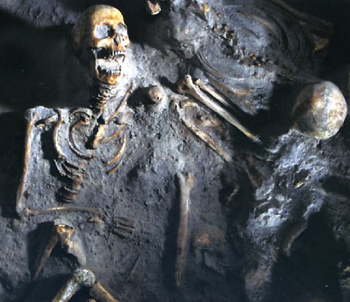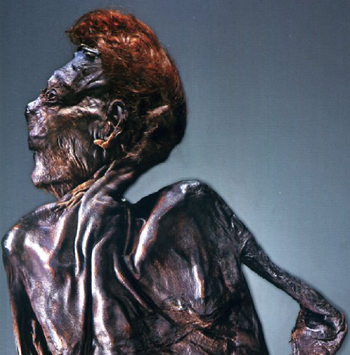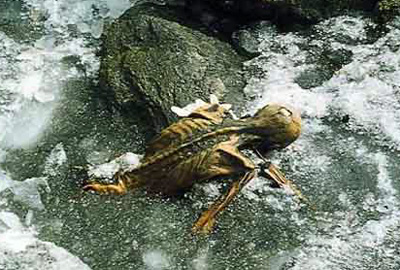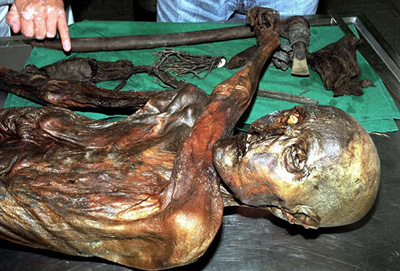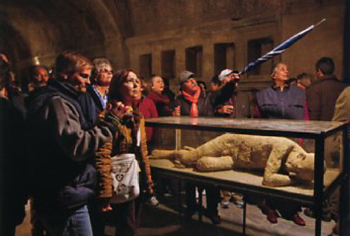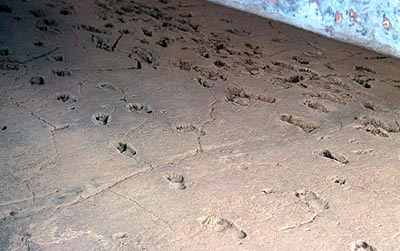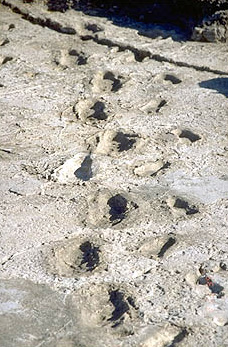
| ||||||||
| Oxic Conditions | Last Updated • February 27, 2010 | |||||||
Skeletons found buried in volcanic ash deposited during the Mt. Vesuvius volcanic eruption of year 79 AD Pompeii, Napoli, Italy © National Geographic 2007 | ||||||||
| Anoxic Conditions | Last Updated • February 27, 2010 | |||||||
soft tissues (among others, parts such as skin, hair, and nails) are preserved
Remains of a human ritually sacrificed and thrown in a peat bog, dated between 400 BC and 400 AD Clonycavan, Ireland © National Geographic 2007 | ||||||||
| Preservation in Ice | Last Updated • February 27, 2010 | |||||||
soft tissues (among others, parts such as skin, hair, and nails) are preserved
Remains of a human found buried in ice in the Italian Alps, dated at 3300 BC Bolzano, Italy (web image) | ||||||||
| Human body casts | Last Updated • February 27, 2010 | |||||||
Pompeii, Napoli, Italy © National Geographic 2007 | Human trace fossils
| Last Updated • February 27, 2010 |
ca. 500 BC Napoli, Italy © National Geographic 2007
ca. 200 BC Huellas de Acahualinca, Managua, Nicaragua (web image)
between 3.59 and 3.75 million years Laetoli Walkway, Laetoli, Tanzania (web image) © Alessandro Grippo, 1994-2010 | |||||
